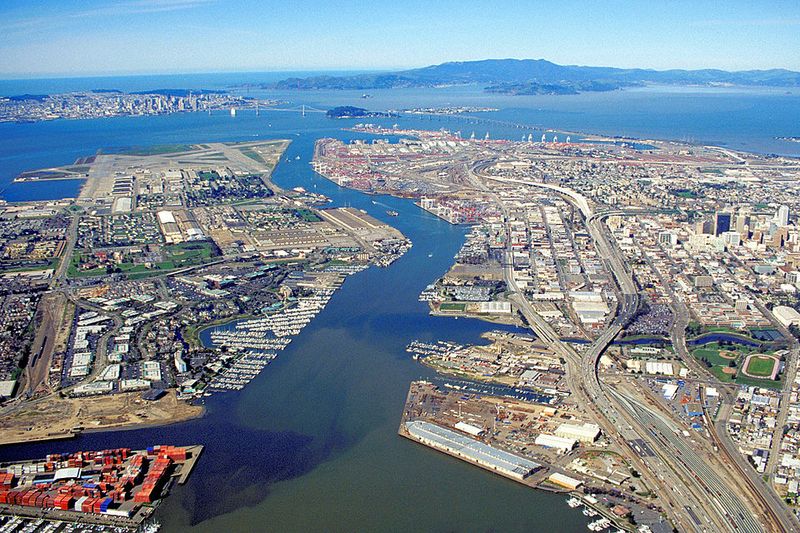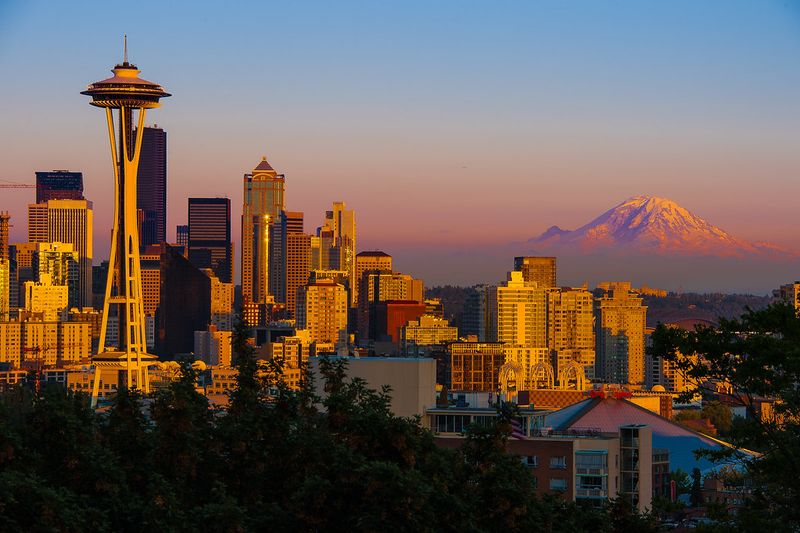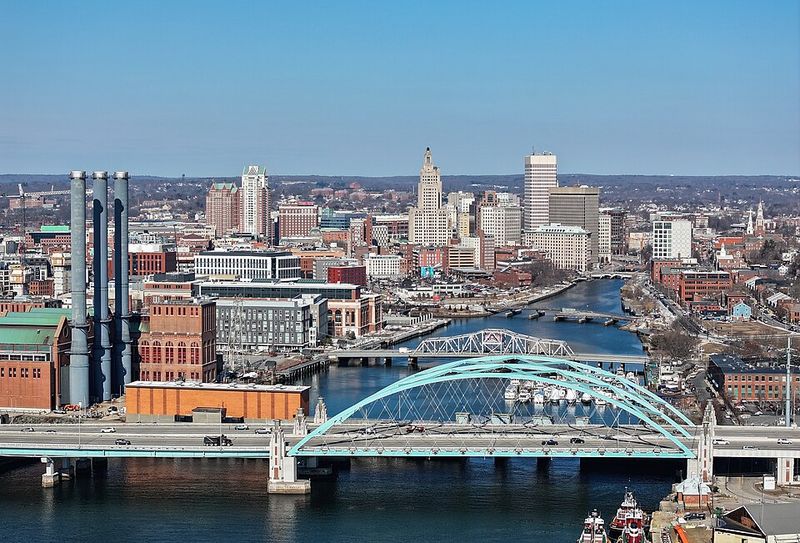Housing costs across America have skyrocketed, leaving middle-class families struggling to make ends meet in cities that were once accessible. Recent data reveals that in many metros, even dual-income households earning well above the national median can no longer afford a typical home. Rising prices, stagnant wages, and soaring interest rates have created a perfect storm, pushing homeownership and comfortable living further out of reach for millions of Americans.
1. Los Angeles, CA
Buying a home in Los Angeles now devours a staggering 73% of a typical household’s income. Families need to earn around $234,619 annually just to afford a median-priced house, according to June 2025 figures.
Even more shocking, Zillow research found that LA would remain unaffordable for most buyers even if mortgage rates dropped to 0%. The sheer price of homes, combined with property taxes and insurance, creates an insurmountable barrier.
Middle-class budgets simply cannot stretch far enough in this sprawling California metropolis. Renters face similarly crushing costs, making LA one of the toughest places in America for everyday families to build financial stability and achieve the dream of homeownership.
2. San Francisco, CA
San Francisco demands an eye-watering $393,443 in annual income to afford a typical home, with housing costs eating up 72.5% of earnings. The tech boom has transformed this iconic city into one of America’s least affordable metros.
Like Los Angeles, Zillow’s analysis shows San Francisco would still be out of reach for average buyers even with a hypothetical 0% mortgage rate. Property values have climbed so high that only the wealthiest households can compete.
Middle-class families have been steadily priced out, forced to move to distant suburbs or leave the Bay Area entirely. The city’s charm and job opportunities remain strong, but financial reality paints a grim picture for anyone hoping to own property here.
3. San Jose, CA
Heart of Silicon Valley, San Jose tops the income requirement chart at $413,100 annually just to buy a median home. Housing costs claim 71.4% of household earnings, leaving little room for anything else.
The concentration of high-paying tech jobs has driven real estate to astronomical levels. Yet even with these salaries, many tech workers struggle to afford homes near their offices.
Zillow confirms San Jose joins the list of cities that would remain unaffordable even at 0% interest rates. Middle-class families, including teachers, nurses, and service workers, find themselves completely shut out of the housing market. The American dream feels impossibly distant when a starter home costs over a million dollars in many neighborhoods.
4. Anaheim–Orange County, CA
Orange County’s sun-soaked lifestyle comes with a brutal price tag. Homebuyers need $302,587 in yearly income, with 72.7% going toward housing costs alone.
Once considered a more affordable alternative to Los Angeles, the OC has seen explosive price growth that has eliminated that advantage. Families are squeezed between high housing costs and everyday expenses like groceries and childcare.
The county’s excellent schools and beach proximity make it desirable, but desirability has translated into unaffordability. Middle-class households earning solid incomes still find themselves unable to compete with wealthier buyers. Many residents commute from distant areas, sacrificing hours daily just to find housing they can somewhat afford while working in Orange County.
5. New York, NY
America’s largest city demands $213,245 annually to buy, with 64.9% of income going to housing. But homeownership tells only part of the story in this vertical metropolis.
New York has been the nation’s most rent-burdened metro for nearly 20 years, with renters paying roughly double the national average ratio of rent to income. Moody’s data confirms this crushing burden persists year after year.
Zillow also places NYC on its list of metros that would stay unaffordable even with 0% mortgage rates. Whether renting or buying, middle-class New Yorkers face impossible choices between housing and other essentials. The city’s energy and opportunities remain unmatched, but financial stress shadows daily life for millions of residents.
6. San Diego, CA
Perfect weather and Pacific beaches make San Diego incredibly desirable, but that desirability has pushed prices beyond middle-class reach. Buyers need $227,612 yearly, with 60.8% dedicated to housing.
Zillow’s research confirms San Diego would remain unaffordable even if interest rates magically dropped to zero. The fundamental problem is property values themselves, not just financing costs.
Families who grew up in San Diego often find themselves unable to afford staying in their hometown. Military families stationed at local bases struggle despite steady incomes. The gap between earnings and housing costs continues widening, forcing difficult decisions about whether the San Diego lifestyle is worth the financial strain and sacrifice of savings.
7. Miami, FL
Miami’s tropical climate attracts wealthy buyers from around the world, pushing prices far beyond local earning power. Homebuyers need $146,476 annually, with 58.2% going to housing costs.
Renters face equally brutal conditions. Moody’s identifies Miami as one of America’s most rent-burdened metros, with rent growth dramatically outpacing income gains. Working families watch their paychecks disappear into housing.
Zillow found that nationally, renting remains slightly more affordable than buying in 2025, but Miami stands out as an extreme pressure point on both fronts. Middle-class residents, including teachers and healthcare workers essential to the city’s function, increasingly cannot afford to live where they work. The affordability crisis threatens Miami’s long-term economic diversity.
8. Oakland, CA
Oakland once offered a more affordable Bay Area alternative, but those days are gone. Buyers now need $244,073 in annual income, with housing consuming 52.9% of earnings.
The city’s proximity to San Francisco and San Jose means spillover demand has driven prices skyward. Longtime residents and middle-class families have been displaced by wealthier newcomers able to pay premium prices.
Despite being slightly more affordable than its neighbors, Oakland remains crushingly expensive by national standards. Teachers, artists, and service workers who gave the city its character find themselves priced out. The cultural diversity that defined Oakland for generations faces erosion as economic pressure reshapes who can afford to live in this historic community along the bay.
9. Seattle, WA
Seattle’s tech boom has transformed this rainy city into a housing affordability nightmare. Homebuyers need $219,498 yearly, with 50.7% going toward housing costs according to June 2025 data.
Local reporting from early 2025 confirmed the squeeze, showing families need $227,000-plus to afford a typical Seattle metro home. Amazon and Microsoft’s growth brought jobs but also unprecedented housing competition.
Middle-class families who lived here for generations now face displacement. The city’s natural beauty, surrounded by mountains and water, makes it highly desirable but increasingly exclusive. Teachers, nurses, and other essential workers commute from ever-farther suburbs, spending hours in traffic because they cannot afford homes near their jobs in this transformed Pacific Northwest metropolis.
10. Boston, MA
Boston’s rich history and world-class universities make it a magnet for educated workers, but housing costs have spiraled beyond middle-class reach. Buyers need $204,465 annually, with 49.1% going to housing.
The city’s limited geography, surrounded by water, restricts new development and intensifies competition for existing homes. Historic preservation rules, while protecting Boston’s character, also limit housing supply.
Middle-class families face tough choices between urban convenience and suburban affordability. Even surrounding communities have seen prices climb as buyers search for alternatives. Young professionals drawn by Boston’s job market often delay homeownership for years or leave the region entirely. The city risks losing the economic diversity that strengthens communities and creates vibrant, sustainable neighborhoods for all income levels.
11. Riverside–Inland Empire, CA
Riverside and the Inland Empire once represented California’s affordable frontier, where middle-class families could own homes. That era has ended. Buyers now need $149,279 yearly, with 47.3% going to housing.
Families fleeing coastal California’s extreme prices drove demand inland, pushing up values in communities that were supposed to be the affordable alternative. Long commutes to Los Angeles or Orange County jobs are now required.
Despite lower prices than coastal metros, the Inland Empire still stretches middle-class budgets thin. Summer heat exceeds 100 degrees regularly, yet housing costs keep climbing. Residents face a double burden of high housing expenses and increased transportation costs from distant commutes to job centers along the coast.
12. Fort Lauderdale, FL
Fort Lauderdale’s beaches and boating lifestyle have attracted wealthy buyers, transforming this Florida city’s affordability. Homebuyers need $124,627 annually, with 45.7% dedicated to housing costs.
The city sits in the shadow of Miami’s even more extreme prices, but that provides little comfort to middle-class families struggling here. Waterfront properties command premium prices, while even inland homes have climbed beyond reach.
Hurricane insurance adds another layer of expense, making total housing costs even more burdensome than purchase prices suggest. Working families essential to the tourism and service economy that powers Fort Lauderdale increasingly cannot afford to live in the city they serve. The gap between service-sector wages and housing costs creates an unsustainable situation for communities.
13. Providence, RI
Providence might surprise people as an affordability trouble spot, but data tells a clear story. Buyers need $135,557 yearly, with 43.2% going to housing costs well above HUD’s 30% burden threshold.
This smaller New England city has seen prices climb as buyers priced out of Boston look for alternatives within commuting distance. Providence’s revitalized downtown and universities drive demand beyond local earning power.
Middle-class families face a market transformed by out-of-state money and investor activity. Rhode Island’s small size means limited housing inventory, intensifying competition. What was once a working-class city with affordable neighborhoods has become yet another metro where typical families struggle. The affordability crisis has spread beyond major coastal cities to impact mid-sized communities throughout the region.
14. Honolulu (Oʻahu), HI
Hawaii’s paradise comes with America’s most extreme housing costs. Honolulu’s median single-family home hovered around $1.16 to $1.18 million in 2025, with October figures showing $1,162,500.
These prices dwarf local median incomes, putting homeownership completely out of reach for typical island families. The University of Hawaii’s 2025 Housing Factbook documents statewide median single-family prices of $950,000, confirming persistent, severe affordability stress.
Limited land, geographic isolation, and wealthy mainland buyers create perfect conditions for pricing out local residents. Native Hawaiian families watch ancestral homelands become playgrounds for the rich. Teachers, nurses, and service workers essential to island life increasingly cannot afford to stay. The affordability crisis threatens Hawaii’s cultural fabric and social sustainability in profound ways.


















